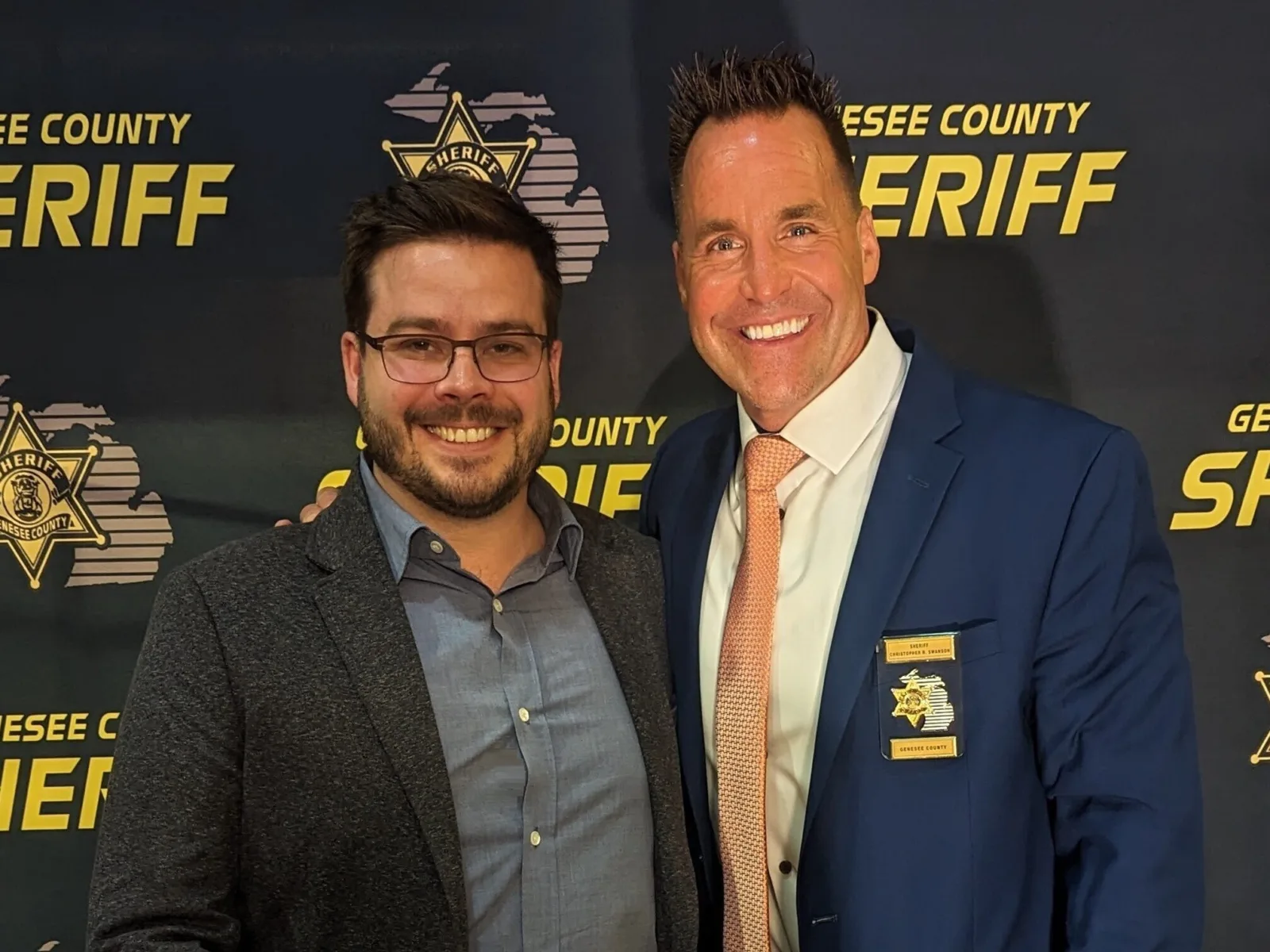A new bipartisan bill signed into law by North Carolina Governor Roy Cooper in June will allow cities to now send civilian responders to crashes instead of police. The change — which is widely supported by police departments across the state and emerged from an Arnold Ventures (AV)-funded research project led by RTI International — will free up understaffed agencies to make better use of their officers’ time.
“We strongly endorse this evidence-based approach to policymaking,” says Anita Ravishankar, director of criminal justice research at AV, which supported RTI’s research. “This is a great example of how research, conducted in close partnership with practitioners, can inform the crafting of better policy, and ultimately lead to better safety and wellbeing outcomes for a community.”
The bill evolved out of a local project that gathered a cohort of seven cities — Durham, Greensboro, Raleigh, Winston-Salem, Burlington, and Cary, North Carolina, and Rock Hill, South Carolina — to work with RTI on an analysis of their 911 call data. The aim was to understand the nature of the calls that law enforcement was receiving, and then to identify the most effective and efficient response to those calls for service, in some cases without police intervention. While such a data-driven approach is common sense, it rarely occurs.
The RTI-led research showed that a large proportion of officers’ time was taken up responding to non-criminal and non-injury traffic collision calls. Greensboro Police Chief John Thompson and city leaders brought this data to the attention of lawmakers who drafted the bill, with local officials providing testimony.
“We realized that we could shift the resources of our police officers to do something more effective in terms of addressing criminal issues and public safety,” says Chief Thompson. “That’s really where the conversation started.”
Following the Data
RTI’s research helped police and city officials understand their call data and make the case for the new state law, says Kevin J. Strom, director of RTI’s Center for Policing Research and Investigation Science.
“Being able to take a higher-level examination of the types of calls coming in and how police are spending their resources allowed us to identify issues around police efficiency, and specifically the number of calls for traffic accidents,” he says. “For Greensboro and some of the other cities, the amount of time that officers were spending on traffic calls was much larger than they anticipated.”
The report found that 10% of all calls for service were related to traffic incidents. In Greensboro alone, police responded to more than 10,000 such calls in a year, which Chief Thompson estimated took up at least 20,000 hours of officers’ time.
As part of the project with RTI, the cohort of cities all implemented alternative responder models for a variety of call types where someone other than law enforcement may be better suited to respond. The Greensboro Police Department wanted to establish a civilian crash investigator program, but a state law requiring a uniformed officer to appear for every crash prevented their efforts. They learned, however, that two North Carolina cities — Wilmington and Fayetteville, North Carolina — had passed local laws exempting them from this requirement.
Devising more effective policy meant taking that data to the state legislature.
“The research that we provided the agencies empowered them to have discussions with elected representatives,” says Brian Aagaard, a research analyst at RTI. “Even though agencies know what their officers are doing generally, once they saw it written in the report, it was eye-opening for them, and it provided the motivation to start conversations with the legislature.”
“It came down to the data supporting the argument”
Equipped with the RTI study, Chief Thompson sought to raise the issue with state lawmakers. During the 2022 legislative session, he got Greensboro Mayor Nancy Vaughan on board and attempted to advance local legislation that would fund a three-year pilot for civilian investigators for minor car crashes. The civilians would be trained city employees who could handle the paperwork of collisions and other traffic incidents. They would not be armed or authorized to issue traffic tickets and could call uniformed officers as backup when necessary.
At first the proposed bill faced political roadblocks. Some lawmakers mistook it as an attempt to defund local police — despite the fact that police themselves had initiated it. The bill failed to get out of the House of Representatives.
By the 2023 legislative session, however, the idea had gained momentum. “There were other cities that wanted to tack onto the bill,” Mayor Vaughan says. “So, we knew that there was interest from other communities.”
Those cities pointed to difficulty recruiting and retaining police officers, which resulted in growing staff shortages. That labor shortage made it more urgent to alleviate the burden of traffic responses on officers. City leaders from Asheville, Burlington, Durham, Greenville, Raleigh, and Winston all voiced support for statewide legislation.
Police chiefs across the state were instrumental in advocating for the bill. The North Carolina Chiefs of Police Association sent their lobbyists to a state senate committee meeting, and Raleigh Police Chief Stella Patterson attended in support of the new policy.
Mayor Vaughan and her staff also made phone calls, sent emails, and spoke to state legislators in the halls of the capital.
“It came down to the data supporting the argument,” Chief Thompson says. “It’s pretty telling when I can stand in front of legislators and say that the officers I have are overworked, they’re overtaxed, and I’m trying to find avenues to reduce their workload so that they don’t continue leaving the workforce and creating more vacancies. This way we can hopefully restore some of the services we’ve had to reduce. That’s a pretty easy sell.”
In the end, the bill enjoyed the backing of Republican lawmakers, some of whom are retired law enforcement. Its house sponsor was state Rep. John Faircloth, a Republican and former police chief.
Virtually every law enforcement agency is losing people, losing employees, or failing to fill vacancies they have.Rep. John Faircloth North Carolina state representative and former police chief
“Virtually every law enforcement agency is losing people, losing employees, or failing to fill vacancies they have,” Faircloth told local news outlet WRAL. “So they’re looking for ways to keep enough action on the street, if you will.”
The bill passed in the House, and the Senate amended it to apply to the entire state, not just Greensboro, before sending it to the governor.
“Reimagining” Emergency Response
With the new law in place, advocates say that cities should now let research guide their implementation.
Destiny Carter, advocacy manager for criminal justice at AV, says that should include evaluating the outcomes of using civilian investigators. It should also include paying close attention to how police reallocate their resources to prioritize preventing serious crimes and promoting community needs. Ultimately, focusing on these outcomes will help make the case for scaling civilian traffic investigators — and other potential alternative responders — to jurisdictions across the country.
In Greensboro, Chief Thompson is gearing up to put a program into practice under the new law. The department will hire five civilian investigators and train them through the police department in conjunction with the state-mandated training for civilian accident investigators. It will supply them with trucks stocked with supplies like gasoline and jumper cables to respond to accidents and help motorists in distress — without requiring the efforts of sworn police officers.
“Obviously, I’m proud that Greensboro led the way on this, and I think it’s great that it’s going statewide,” Mayor Vaughan says. “I hope that as these new, non-sworn employees are put out on the road, our existing police officers will realize that this is an assist for them.”
The experience in North Carolina shows that the rigorous use and clear explanation of data can lead to bipartisan policy change.






















